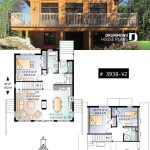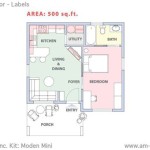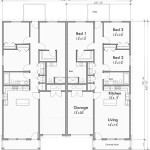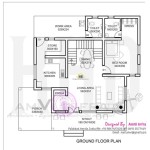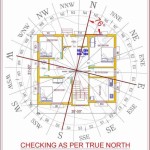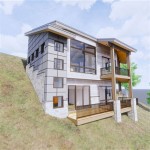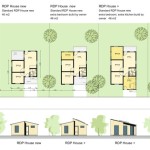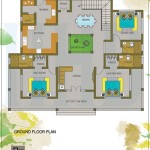Small Barn House Floor Plans: Maximizing Space and Character
The allure of barn homes continues to grow, offering a unique blend of rustic charm and modern living. Small barn house floor plans, in particular, are gaining popularity for their efficient use of space and potential for affordability. These designs cater to individuals and families seeking a simpler lifestyle without sacrificing comfort and aesthetic appeal. This article explores the considerations, design principles, and practical advantages of small barn house floor plans.
A small barn house floor plan typically encompasses a footprint ranging from 500 to 1500 square feet. This size constraint necessitates careful planning to optimize every square inch. Effective design prioritizes open living spaces, strategic storage solutions, and a seamless connection between the interior and exterior environments. The architectural character of a barn house, with its high ceilings and exposed beams, can be preserved even within a smaller layout, adding to the aesthetic value and perceived spaciousness.
The decision to pursue a small barn house often stems from a desire for a more sustainable and financially responsible lifestyle. The reduced square footage translates to lower construction costs, reduced energy consumption, and decreased maintenance requirements. Furthermore, smaller homes often encourage a decluttered and more mindful existence, fostering a connection with the surrounding environment rather than the accumulation of material possessions.
Key Considerations in Designing Small Barn House Floor Plans
Designing an efficient and functional small barn house requires careful consideration of several key factors. These include the specific needs of the occupants, the site conditions, and the desired aesthetic qualities. Each of these considerations will influence the layout, materials, and overall design of the home.
Firstly, understanding the lifestyle and needs of the inhabitants is paramount. Will the home serve as a primary residence, a vacation getaway, or a short-term rental? The answer to this question will dictate the required number of bedrooms, bathrooms, and living spaces. For instance, a single occupant may prioritize a larger open living area and a dedicated workspace, while a family with children will require more bedrooms and functional storage solutions. The anticipated frequency of entertaining guests will also influence the size and layout of the kitchen and dining areas.
Secondly, the site conditions play a crucial role in determining the feasibility and design of the barn house. The topography, orientation, and local climate will influence the placement of the building, the choice of materials, and the incorporation of passive heating and cooling strategies. A south-facing orientation, for example, can maximize solar gain during the winter months, reducing the need for artificial heating. The presence of existing trees, water sources, and soil conditions will also need to be considered during the design process. Local building codes and zoning regulations must also be adhered to, ensuring that the proposed design meets all legal requirements.
Thirdly, the aesthetic preferences of the homeowner will shape the overall character of the barn house. While maintaining the rustic charm of a traditional barn is often desired, the specific architectural style can be adapted to suit individual tastes. Modern barn homes may incorporate sleek lines, minimalist interiors, and large windows to create a contemporary aesthetic. Conversely, a more traditional barn house may feature reclaimed wood, exposed beams, and handcrafted details to evoke a sense of history and authenticity. The choice of exterior materials, such as wood siding, metal roofing, and stone accents, will also contribute to the overall aesthetic appeal.
Maximizing Space in Small Barn House Floor Plans
Given the limited square footage, maximizing space is a critical aspect of designing small barn house floor plans. This involves employing various strategies to create a sense of openness and functionality, ensuring that every area serves multiple purposes and that storage solutions are integrated seamlessly into the overall design.
Open floor plans are a common feature in small barn houses, allowing for a free flow of movement between the living, dining, and kitchen areas. This eliminates the need for dividing walls, creating a sense of spaciousness and allowing natural light to penetrate deeply into the interior. The visual connection between these areas also encourages social interaction and a sense of community within the home.
Vertical space is another valuable resource that can be exploited in small barn houses. High ceilings, a characteristic feature of barn architecture, can be utilized to create loft spaces for sleeping, storage, or office areas. These lofts can be accessed by a ladder or a staircase, adding visual interest to the interior and maximizing the usable floor area. The space above kitchen cabinets or closets can also be used for storage, further optimizing the use of vertical space.
Multifunctional furniture is essential for maximizing space in a small barn house. Convertible sofas that transform into beds, dining tables that fold away, and storage ottomans are all excellent examples of furniture that can serve multiple purposes. These pieces allow for flexibility in the use of space, adapting to different needs and activities. Built-in storage solutions, such as shelving units, drawers, and cabinets, can also be integrated into the walls and under the stairs, minimizing clutter and maximizing storage capacity.
The strategic use of light and color can also contribute to the perception of spaciousness. Light, neutral colors on the walls and ceilings can reflect light and make a room feel larger. Large windows and skylights can bring in natural light, further enhancing the sense of openness and connection with the outdoors. Mirrors can also be used to create the illusion of more space, reflecting light and expanding the visual boundaries of a room.
Advantages of Small Barn House Floor Plans
Choosing a small barn house floor plan offers several distinct advantages over larger, more conventional homes. These advantages encompass financial benefits, environmental considerations, and lifestyle enhancements, making small barn houses an attractive option for a variety of homeowners.
One of the primary advantages of small barn houses is their affordability. The reduced square footage translates directly into lower construction costs, as less materials and labor are required. This can make homeownership more accessible to individuals and families who may not be able to afford a larger home. Furthermore, smaller homes typically require less maintenance and repairs, reducing ongoing expenses. Property taxes are also often lower for smaller homes, further contributing to the overall cost savings.
Small barn houses also offer significant environmental benefits. Their smaller footprint reduces energy consumption for heating, cooling, and lighting. This translates into lower utility bills and a reduced carbon footprint. The use of sustainable building materials, such as reclaimed wood and recycled metal, can further minimize the environmental impact of the construction process. Small homes also require less land, preserving natural habitats and reducing the impact on the surrounding environment.
Beyond the financial and environmental benefits, small barn houses can also enhance the quality of life for their inhabitants. They encourage a simpler, more decluttered lifestyle, focusing on experiences rather than material possessions. The reduced maintenance requirements free up time for pursuing hobbies, spending time with loved ones, and connecting with nature. The close proximity to the outdoors, often a characteristic of barn house design, promotes a healthier and more active lifestyle. The intimate scale of the home can also foster a sense of coziness and security, creating a welcoming and comfortable living environment.
In conclusion, small barn house floor plans offer a compelling alternative to conventional housing. By carefully considering the needs of the occupants, maximizing space through innovative design strategies, and embracing the inherent charm of barn architecture, it is possible to create a functional, aesthetically pleasing, and sustainable living space. The advantages of affordability, environmental responsibility, and enhanced lifestyle make small barn houses an increasingly popular choice for those seeking a simpler and more fulfilling way of life.

Small Barn House Plans Soaring Spaces

Small Barn House Plans Soaring Spaces

Newest Barn House Design And Floor Plans From Yankee Homes Style

Small But Mighty Barn Home Plan Davis Frame Co

Small Barn House Plans Soaring Spaces

Barn Style House Plans In Harmony With Our Heritage

Cabin Floor Plans Lofted Barn Shed House

Trending Barn House Plans Houseplans Blog Com

Small Barn House Plans

Trending Barn House Plans Houseplans Blog Com

